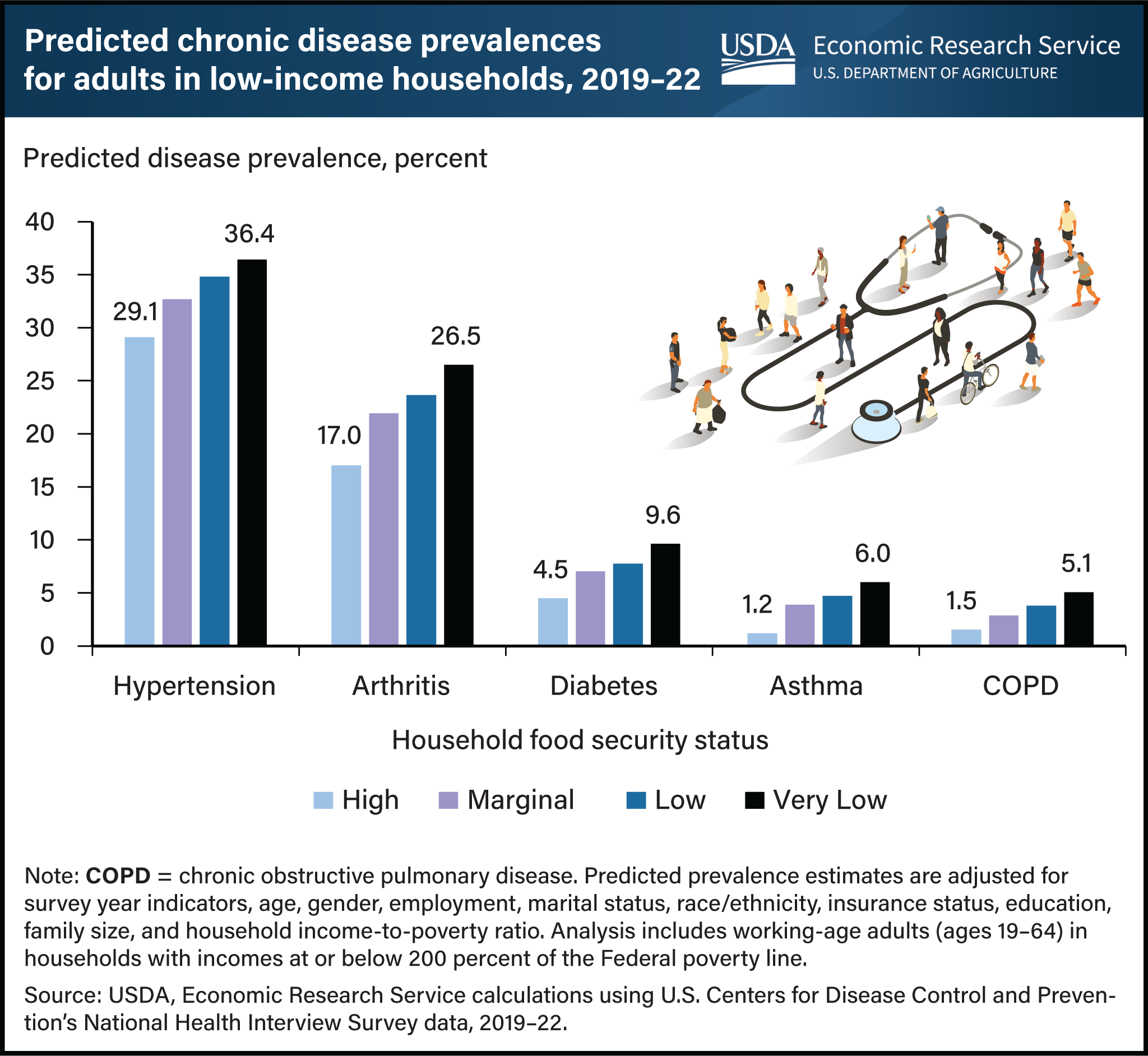Predicted prevalence of five chronic diseases increased as household food security worsened
- by Christian A. Gregory and Madeline Reed-Jones
- 1/8/2024

Adults in U.S. households that are less food secure are significantly more likely to have one or more chronic diseases, and the likelihood increases as food insecurity worsens. Researchers at USDA, Economic Research Service (ERS) recently updated estimates of the fraction of working-age adults with chronic disease in households with incomes at or below 200 percent of the Federal poverty level based on food security status using data from 2019–22. They looked at the rate of five chronic diseases across four levels of household food security, ranging from high food security (households with no problems or anxiety about consistently obtaining adequate food) to very low food security (eating patterns of one or more household members were disrupted and food intake reduced). From 2019–22, predicted illness prevalences among the five chronic diseases examined were 3.6 to 9.5 percentage points higher for adults in very low food-secure households compared with those in high food-secure households. This shows that food security status and health are closely linked. This chart updates information in the Amber Waves article, Adults in Households With More Severe Food Insecurity Are More Likely To Have a Chronic Disease, published in October 2017, and in the ERS report Food Insecurity, Chronic Disease, and Health Among Working-Age Adults, published in July 2017.

